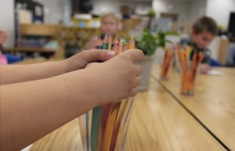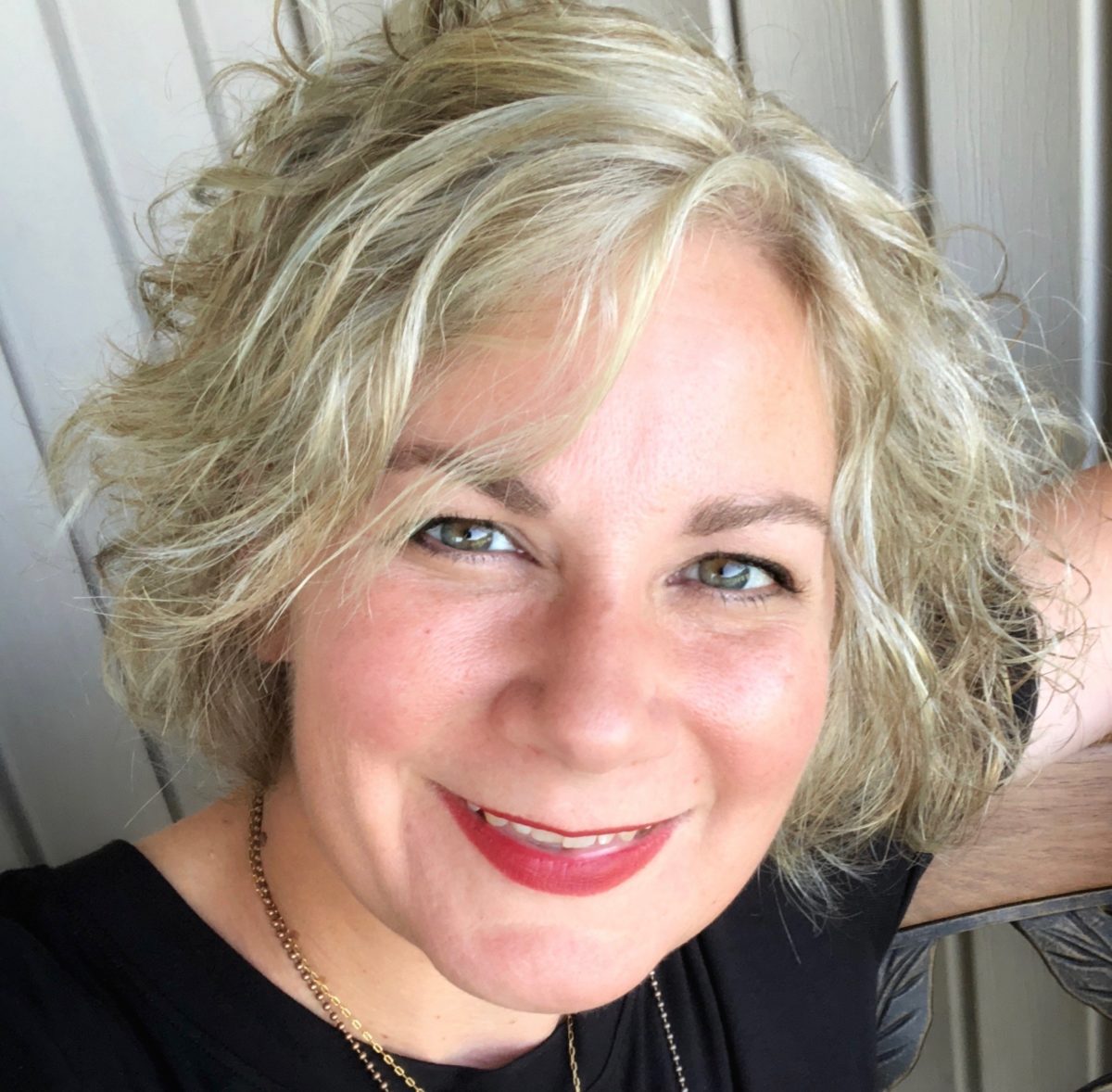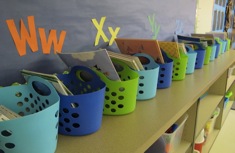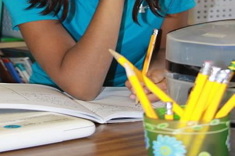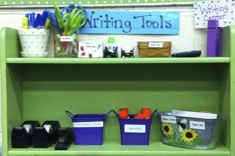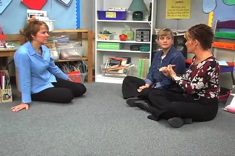In college I became a brain research junkie. I blame my dad. He was an elite pistol shooter, winning national and international titles and obliterating records. He believed in practice and mental toughness. His mantra was (and remains) What you think is what you get. I was alive for three decades before I realized it was Henry Ford—not my dad—who said, “If you think you can or you think you can’t—you’re right.”
It was inevitable that I became hooked on brain research. I collected brain facts the way my college roommate collected office supplies: copiously and compulsively. Of all the brain information I was absorbing, the thing that tugged at me most was the way brains are dependent on nourishment. I was drawn to the ancient debate of nurture versus nature. I wrote research papers and spent hours—days, even—in the library stacks.
Even after graduating and accepting a teaching position, I continued studying the brain, piling on as many child development classes as possible and reading any professional book I could get my hands on about teaching with the brain in mind.
Then we adopted our first child. It turns out brain researchers have a lot to say about adopted children. Most of the research is grim.
I quit reading brain research. Two years later we adopted our two daughters. They were ages four and six at the time. As images of Dr. Bruce Perry’s cross sections of brains haunted me, I was learning how to parent a four-year-old with anger issues.
Children need boundaries and love. More love and solid boundaries. We focused on love and boundaries; I kept ignoring all I knew about the brain.
Ignoring something doesn’t make it go away.
Ignoring something doesn’t make it untrue.
Ignoring something doesn’t make healing happen.
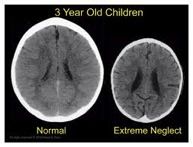 The truth is that children’s brains are altered when they experience stress and trauma. Dr. Perry’s brain cross sections show this truth. Both brains are from three-year-old children. One is from a child who has always been nourished. The other is from a Romanian orphan who lived a lifetime in an orphanage. The two brains are from opposite ends of the nourishment spectrum. It makes the differences stark. The nourished brain is larger with a thicker membrane. The brain from a history of hard is smaller, and the dark spots in the center are enlarged. Those dark spots in the center are the amygdala. The amygdala is our emotional control panel. It is the part of the brain in charge of feelings, emotional behavior, and motivation. It is the place fear forms. In children from hard places, their primary emotion is fear. Because the amygdala is enlarged, children from hard places have extreme reactions when they feel fear.
The truth is that children’s brains are altered when they experience stress and trauma. Dr. Perry’s brain cross sections show this truth. Both brains are from three-year-old children. One is from a child who has always been nourished. The other is from a Romanian orphan who lived a lifetime in an orphanage. The two brains are from opposite ends of the nourishment spectrum. It makes the differences stark. The nourished brain is larger with a thicker membrane. The brain from a history of hard is smaller, and the dark spots in the center are enlarged. Those dark spots in the center are the amygdala. The amygdala is our emotional control panel. It is the part of the brain in charge of feelings, emotional behavior, and motivation. It is the place fear forms. In children from hard places, their primary emotion is fear. Because the amygdala is enlarged, children from hard places have extreme reactions when they feel fear.
Where’s Your Pencil?
When I ask teachers to imagine a child who doesn’t want to write, one of the first images they conjure is a child without a pencil. We’ve all faced kids without a pencil. Some kids may even go most of writing workshop undetected because they are quiet and have writing folders and paper and everything else that leads us to believe they are writing . . . except they’re not, because they don’t have a pencil.
It’s frustrating to type this scenario and even more frustrating to live it. You know what happens next. The teacher asks, “Where’s your pencil?” Upon asking this question, there are often three reactions.
Fight: The child yells back. Sometimes there’s pounding of fists and shoving of chairs. We’re often shocked by the overreaction to a simple question.
Flight: Another child may sink back, perhaps inching under a table or pulling up a hoodie and trying to disappear.
Freeze: Some children stare back. Their faces are blank, and other than a few blinks, there is no reaction.
These are responses to fear. It is important for us to learn to recognize fear. More and more children are coming to our classrooms with enlarged amygdalae. They feel fear and they respond out of this fear. It’s important to realize that when we think children are being willful, they may actually be afraid.
Trading Good for Best
In writing workshop, I’ve decided to stop asking, “Where’s your pencil?” I understand that it’s good for students to develop responsibility by having their writing supplies. Responsibility for supplies is a life skill.
However, I’ve decided to trade what’s good for what’s best.
It’s best to meet needs. Students who are nourished ask for pencils when they don’t have them. They’re not afraid. The minilesson ends, they gather their supplies, and when they realize they don’t have a pencil, they ask. They ask a neighbor or a friend or the teacher. They find a pencil, settle in, and start writing.
Children who don’t ask for a pencil might not be being willful; instead they could be afraid. Instead of asking, they do the best they can. It’s essential for educators to recognize fear in children. Some typical responses are tight fists, wide eyes, and shallow breathing. Children may be responding with fight, but they aren’t angry. Children may respond with flight, but they aren’t lazy. Children may respond with freeze, but they aren’t defiant. When we learn to notice the signs of fear, we are able to intentionally help a child heal.
Asking “Where’s your pencil?” doesn’t do much to help a brain heal. That’s why I’ve decided to stop asking.
Healing Happens
It turns out that brains can heal. Amygdalae can be reduced in size. Although the research can be grim, scientists are finding that when children are nourished intentionally by adults, their brains can heal. My own children have been removed from hard places and now live in a forever family that nourishes and invests in them. They are healing.
The way a brain heals is not complex. Brains heal in the same way they are nourished at the beginning of life: by having needs met. Consider an infant. The baby cries and the momma comes. If the baby is hungry, the momma feeds her. The baby cries and the daddy comes. If the baby is cold, the daddy warms him. Basic needs are met.
A brain in an older child heals the same way. If children need pencils, we give them pencils. We teach them with our words and our actions that we care enough to meet their needs. When we are intentional about responding to children in nourishing ways, they are more likely to be able to write well. All children benefit from nourishment. All writers benefit from nourishment.
If we change our perspective from seeing misbehavior as willful and instead identify it as a chance to meet needs and build relationships, we will help children learn to write. So add a jar of pencils to your writing center (add some flower toppers or long tape flags as a reminder for students to return them) and begin trading what’s good for what’s best in your writing workshop.

